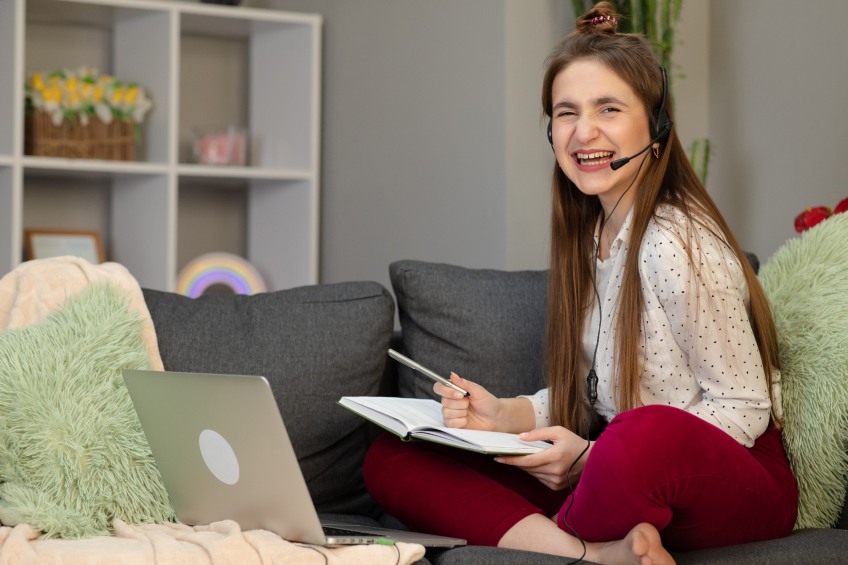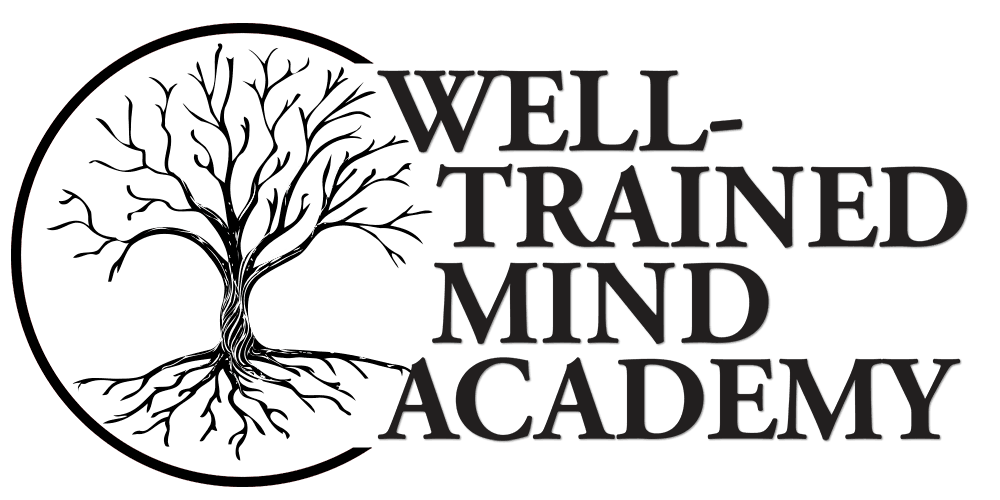Setting the Stage for a Great High School Experience

Well, we are officially closer to the start of the new school year than we are to the end of the last one. School supply deals are raging, and back-to-the-classroom clothing sales are abundant. While your new high schooler might not need all of the etceteras that go along with in-person learning, there still is a fair bit of prepping to do in order to set your student up for success.
Cover All the Subject Areas
First, make sure you have a plan to cover all of the major subject areas required for the 9th-grade year: math, science, language arts, and history. We also recommend starting (or continuing) with a world language. If your student is new to homeschool or online learning, these five classes will give your student plenty to do while giving them time to adjust to their new schooling environment. You can find some suggested course plans in the Well-Trained Mind Academy Student & Parent Handbook.
Map Out the Rest of High School
Once you know how you are going to fill the five major subject areas, make a preliminary map of the rest of your student’s high school classes. You can use this worksheet, taken from The Well-Trained Mind (4th ed), to plan out the distribution of high school credits over the following three years. As you plan, try and get any requirements for graduation out of the way early. Most seniors don’t want to be stuck taking U.S. Government; they’d rather spend their credits on elective classes they find interesting. And while, in general, high school graduation requirements don’t apply to homeschoolers, we recommend that you stay close to state guidelines because those classes will look best on a high school transcript, which will be necessary for college, internship, and job applications.
Check In With Your Student
Now that you have a plan for the fall and a loosely constructed map for the following years, check in with your student. Making sure they are starting the school year with a cool, clear head is very important. The past year and a half have been really hard, and it has been especially hard for young people who are just starting to figure out who they are and what they want to do in this life.
Attitude Towards Learning
Go back to your course list for fall and make sure the student is on board with their classes and the delivery of the content. Is your student excited about online learning? Does your student wish they were taking some classes in person? Does your student feel challenged? Or overwhelmed? Adjust the schedule as needed. Look for different learning options if the ones selected make your student cringe. Figure out what extracurricular activities your student will be doing and if they want to do more (or less). The more engaged your student is with their schedule and its delivery, the more invested they will be in their own education and success.
Testing for Processing Issues & Learning Disabilities
The review of your student’s plan is also a good time to talk frankly about how the student learns and if there have been any processing issues the student has dealt with in the past. This is especially true if you are trying a new approach to high school because your student has been very unhappy with their previous educational environment. We bring up testing before high school starts because we want to clear a path for student success. Your student may not need testing, but if they do, now is a great time to figure out exactly what they need and how to get it to them so their high school experience is full and gratifying.*
Start by ruling out physical difficulties. Ask your pediatrician for a full workup and follow up on anything that seems of concern by asking for a referral to a specialist. If nothing seems wrong, but you know your student is struggling, go back to your pediatrician. Ask if other tests can be done to rule out vision or hearing problems, allergies, or minor seizure disorders. Next, if necessary, have your child evaluated for specific learning differences by an educational psychologist. An educational psychologist will focus primarily on the child’s school and learning experiences, academic skill levels, and any difficulties in performing academic work. Remember: a learning difference is not bad; it is a signal to find new teaching and learning strategies that work with your student’s processing style. The label given to your student’s learning difference points to a solution for a learning plan–it does not define your child!
Operation High School is a Go!
So, you have a plan, your student is excited about their classes and content delivery, and you are on the right track as far as your student’s well-being is concerned. The start of high school isn’t looking so intimidating. Check in with your student frequently, and don’t be afraid to adjust the course if things aren’t going well. The most wonderful thing about schooling at home is that you and your student are in charge, and you can always redraw the path to educational success!
*For a more detailed guide on how and when to get your student tested, see Chapter 4 “Differences, Disabilities, and Disorders” of Rethinking School.
